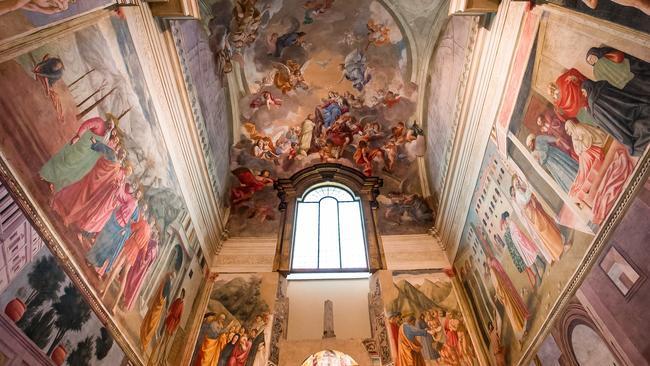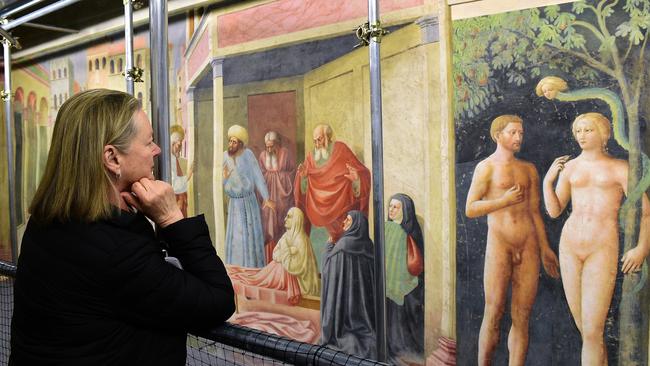Things to do in Florence
Restoration work at the Brancacci Chapel provides an eye-to-eye opportunity with Florentine treasures.

You’ve seen the David, in fact you’ve seen both (the Michelangelo in the Accademia and the Donatello in the Bargello); you’ve stood in front of the Botticellis in the Uffizi; you’ve wandered past the cells at San Marco adorned with the work of Fra Angelico. You’ve seen the newly restored Raphael at the Pitti Palace and enough Giottos and Vasaris and Cimabues for a lifetime.
But you have seen nothing, really, until you’ve been up close and personal with the Masaccio frescoes at Florence’s Santa Maria del Carmine, that simple church with its rough stone and brick facade on the (relatively) quiet side of the River Arno. These 12 panels high on the walls of the side chapel known as the Brancacci Chapel have long been a personal favourite, but this year they really delivered. That’s because for the first time for about 600 years, ordinary people (that’s everyone bar the artists and the patrons and the restoration experts) can see them at eye level.
Think about it. We’ve craned our necks for years looking up at the ceilings and vast walls of Italian churches to see the frescoes that define the Renaissance. In some churches now, well-placed giant mirrors on the floor allow a better look at the paintings via the reflections. There are guidebooks to consult and some try binoculars but there’s still a vast and impossible distance between the viewer and these masterpieces. Until now, that is. Since February, visitors have been able to climb up the scaffolding built for experts working on the restoration of the frescoes and see magnificent work at eye level, just a little more than an arm’s length away.

The excursion took my breath away, even though I have seen the Masaccio work two or three times over the past five decades. The small tours of about 10 or 15 people allow about 15 minutes to see the two layers of frescoes painted between 1422 and 1483 by three different artists – Masaccio, Masolino and Filippino Lippi. There’s one security person and you’re requested not to ask any questions but can take as many pictures as you please. On a beautiful Sunday afternoon in May, our group speaks in hushed tones, united by the sense we are seeing something very special.
Here, close up, is the simple panel by Masaccio – the pupil who soon overtook his master, Masolino – of the Distribution of Alms, with the artist’s focus on the woman carrying her child; here, too, Masaccio’s Expulsion from the Garden of Eden in one end, complementing Masolino’s Tempation of the couple at the other.
The chance to see the frescoes up close is almost accidental. They are undergoing restoration work and would normally be closed for at least a year. The decision to run limited tours on the days the experts are off site means that there is at least some cashflow but, more importantly, the work remains available for tourists.
I first saw the chapel in the 1970s, missed the frescoes in the 1980s when they were closed for restoration for several years; saw them again in the 1990s and, staying down the street in an Airbnb this year, was determined to return for another viewing. Thanks to the doggedness of my travelling companion, who tracked down the email and booked tickets, I did.
The frescoes show the life of Saint Peter and were designed by Masolino and painted by him and his pupil Masaccio. Masolino left town before they were completed and Masaccio also went to Rome where he died very young. Widely regarded as the genesis of much Renaissance painting, the frescoes were completed by Filippino Lippi much later. They don’t disappoint from ground level but if you get to Florence in the next few months, put the Brancacci at the top of your list and get ready for an OMG moment.


To join the conversation, please log in. Don't have an account? Register
Join the conversation, you are commenting as Logout